ARQ Wealth Advisors: Q2 2021 Commentary
By Richard Siegel, CFP®
The second quarter of 2021 once again delivered strong equity market performance and economic growth. In fact, it was the fourth quarter in a row that the economy realized strong GDP growth coupled with impressive capital market gains. This can all be attributed to the pandemic recovery. Although the Covid-19 nightmare isn’t completely in the rearview mirror, natural immunity and vaccinations have enabled the economy to mostly reopen. Government stimulus, pent up consumer demand, and powerful corporate earnings growth have been the key drivers behind this equity market recovery. Unlike most bear market recessions in history, this one was unique in that the velocity to the downside and then the upside were among the fastest on record.

Although Covid-19 statistics in the U.S. are remarkably improved from the peak of the virus in January, 2021, variants of the virus may be a headwind to growth in the back half of 2021. Inflationary pressures could also create difficulties, but many analysts along with the Fed’s base case scenario is that the current, above trend inflation metrics will be transitory as supply chains are repaired and pent up demand levels out. On a positive note, corporate earnings forecasts and economic data remain incredibly strong and the Fed’s monetary policy remains accommodative, meaning rates should remain near historic lows for the next couple of years, providing a low hurdle rate for lending and borrowing. As a final note, the highly publicized infrastructure bill has yet to pass, but if it does, there may be increased market volatility due to partisan bickering and possible changes to tax policy.
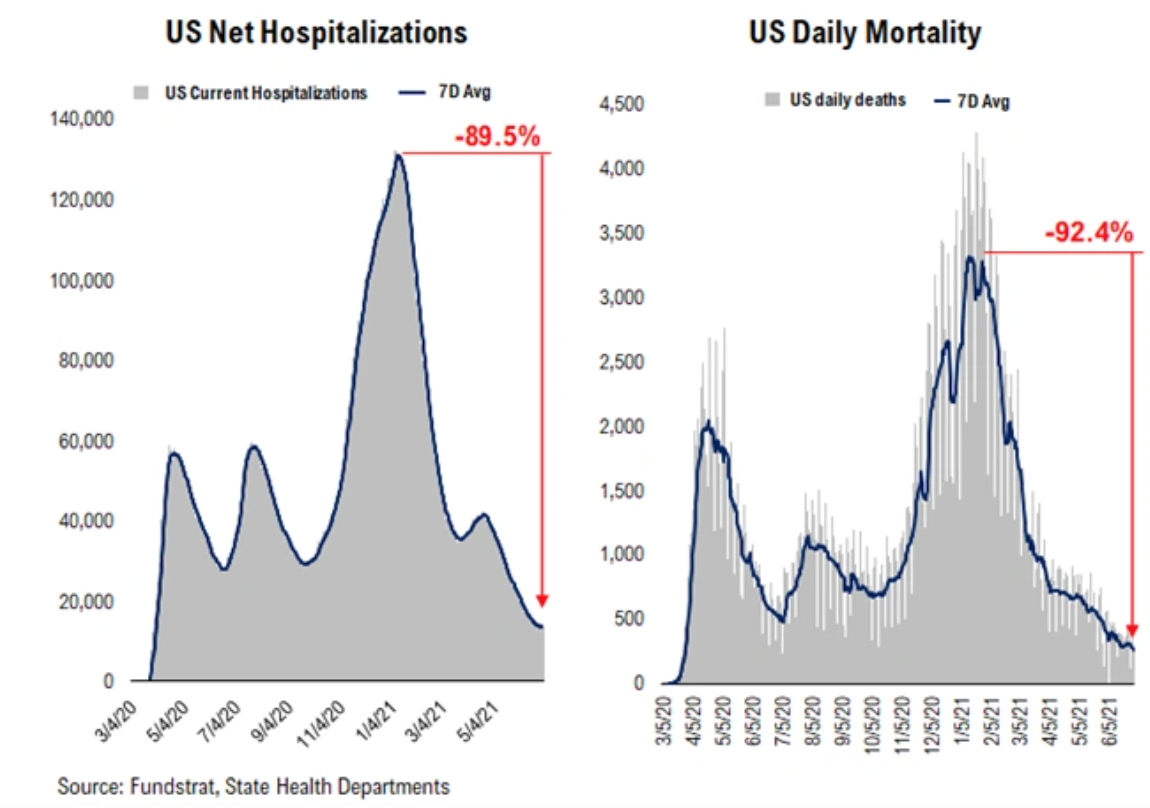
State of the Economy
The powerful economic rebound that began in mid-2020 has transitioned into a full-fledged boom. U.S. growth as measured by gross domestic product (GDP) is forecast to grow at approximately 7% for the full year 2021, approximately 3X the historic average. It is not just domestic growth that impresses, global GDP is estimated to deliver growth in the 6% range for the full year 2021. Indeed, we are in a synchronized global economic expansion. A chart of several metrics dating back to 2000, illustrates just how volatile the data has been over the past 18 months since the pandemic upended the economy. Particularly noteworthy is the rebound in the unemployment rate. During the spring of 2020 at the height of the pandemic shut down, unemployment hit 14.4%. While there is still more work to do, U.S. unemployment currently sits below 6%. Inflation is another metric worth noting; as the economy has reopened, strong consumer demand has created a dynamic of an incredible amount of money chasing too few goods, pushing prices up. The current housing market boom and rising airline ticket prices are perfect examples of this condition. Although inflation metrics will most likely peak soon and trend lower, it would not be surprising to see above average inflation for some time due to the massive increase in money creation over the past 18 months.
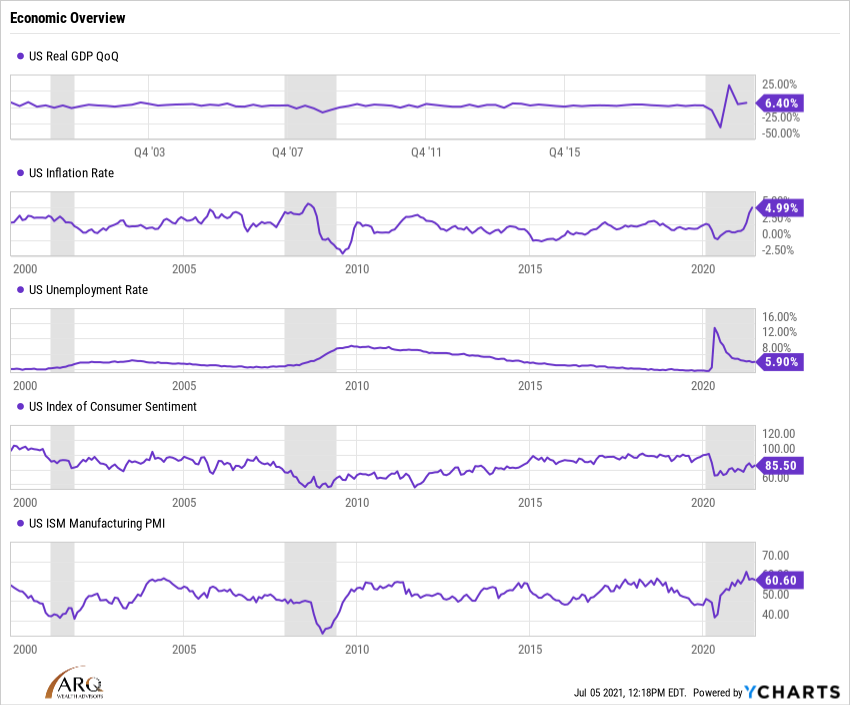
Equity Markets Overview
Despite some violent moves under the surface, the stock market is effectively sitting at all time highs. Over the past several months there have been some very interesting rotations between U.S. and international, large cap versus small cap, and value versus growth. Additionally, there have been a series of what can be considered micro-bubbles. Take for example the highly publicized ARKK ETF, which invests in innovative companies like Tesla, Square, and Teladoc. During Q2, it was down a whopping 22% from peak to trough versus a more stable and diversified DJIA. Or better yet, how about Bitcoin, down 52% from peak?
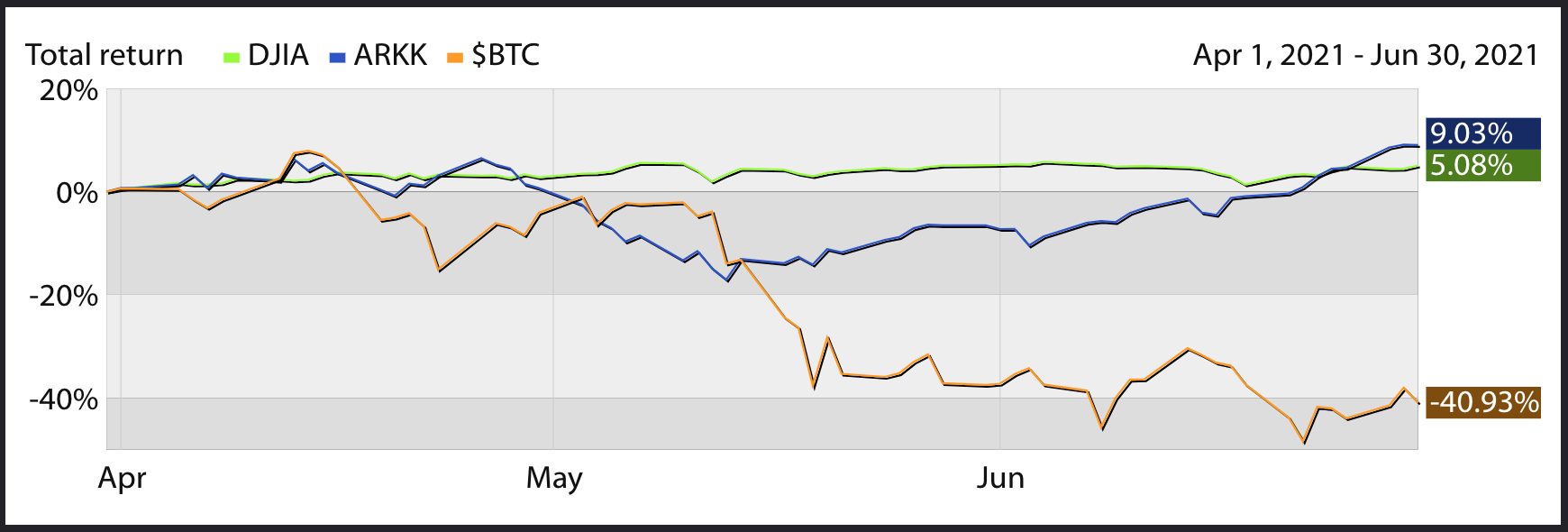
Value versus growth stocks have really been the biggest story over the past several months. Think of value stocks as more economically sensitive (financials, materials, industrials, energy) and growth stocks (technology and consumer discretionary) typically grow earnings at a faster rate than value, have higher valuations and usually don’t pay dividends. It is striking that value outperformed growth by 11% in Q1, just to lag by almost the exact same differential in Q2.
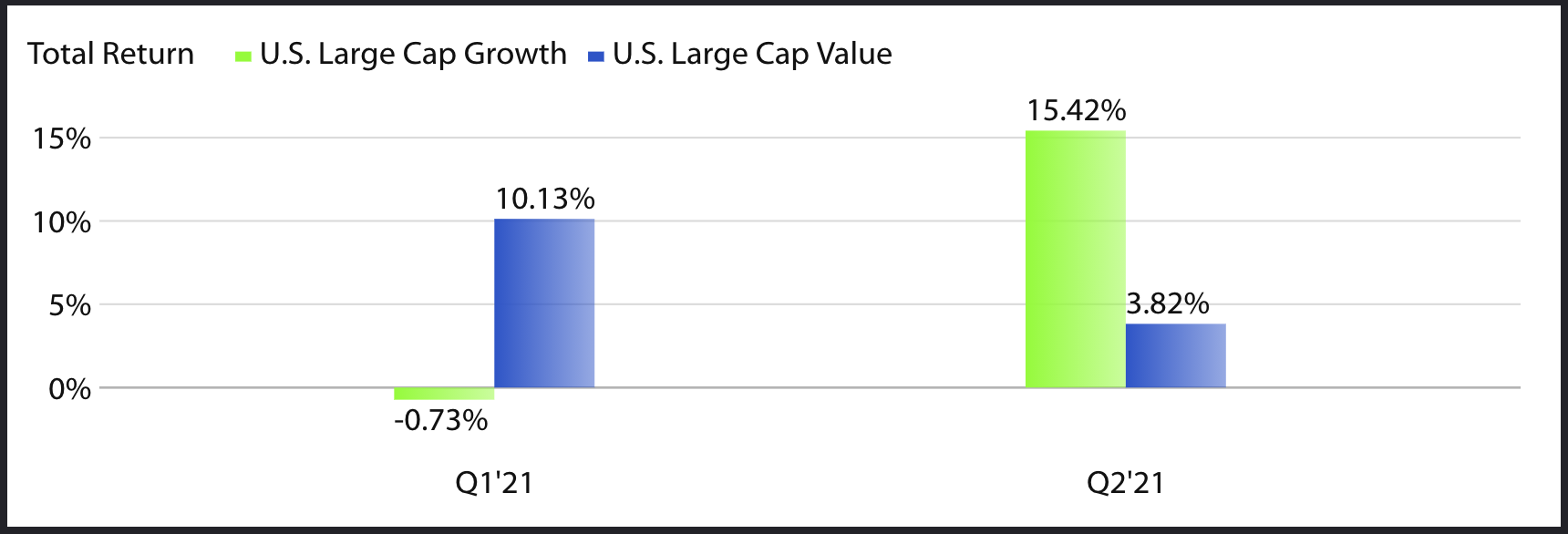
The stock market can’t seem to put together a pervasive trend this year. It feels like it’s trying to digest the data in a fast moving period of change. That being said, the only real trend of consequence is that all of the major benchmarks have moved up significantly thus far in 2021. Interestingly, history shows that very strong first half returns in a calendar year usually means a strong second half as well. As of the end of Q2, the top 10 stocks by weight in the S&P 500 Index had a forward P/E ratio of 30.0, while the remaining 490 stocks in the index had a P/E ratio of 18.9. This disparity has been an issue for some time and one that we are concerned about. Our current equity allocations are addressing this, as we have begun to favor cheaper parts of the global equity markets.

Fixed Income Overview
Just when you thought bonds lost their luster, fixed income investments turned in respectable returns over the past three months, as interest rates retraced part of their huge move up over the past year. The benchmark 10-year Treasury yield began the quarter at 1.75% and ended the period at 1.44%, pushing bond values upward. Quarterly returns in the 1.3% – 1.8% range in a low interest rate environment should be considered strong returns. For the first half of the year, the Bloomberg Barclays U.S. Aggregate Bond Index struggled with a return of -1.60%, while our fixed income/non-traditional investments delivered a positive return of 0.89%, a difference of 2.49%. We attribute this to keeping our average bond duration lower than the index, therefore reducing interest rate sensitivity and allocating capital to low volatility, non-traditional investments that tend to deliver bond-like returns over the long-term and thrive in rising rate environments. We would expect rates to resume their climb to higher levels from here, albeit at a choppier and slower rate as economic growth and higher than normal inflation take hold.

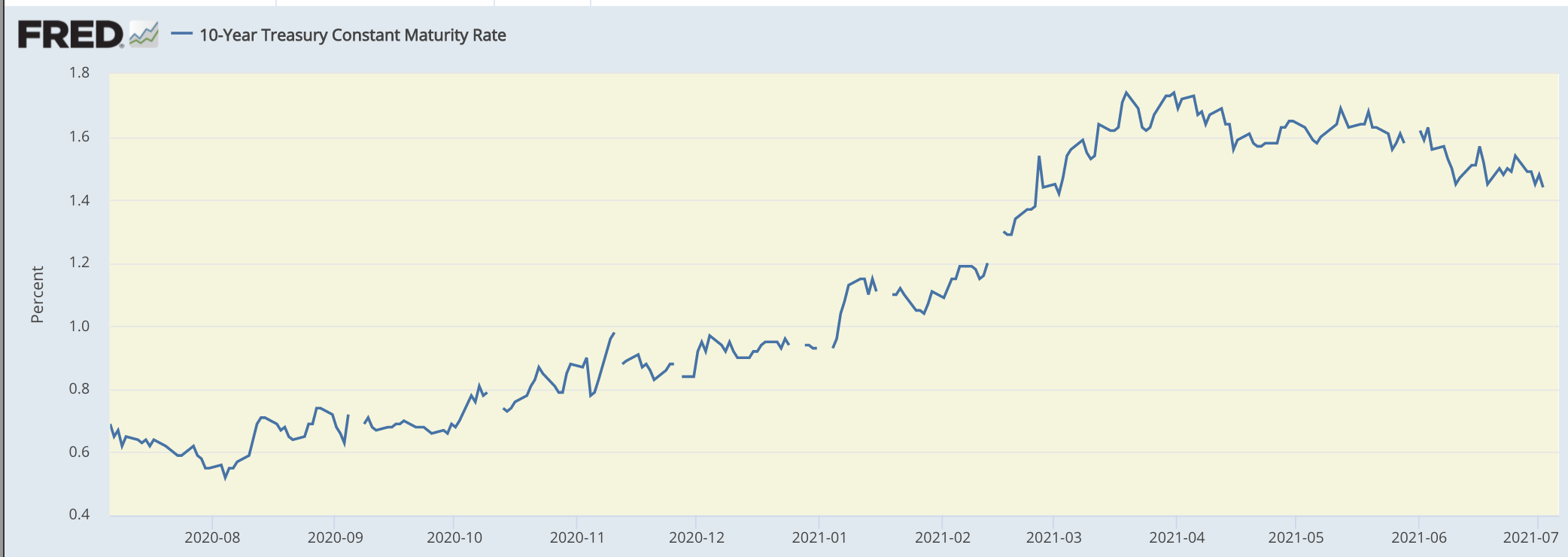
Heading into the second half of 2021, there is precedent for continued strength in the equity market. There are definitely pockets of overvaluation, but there are also many areas that look attractive. As stewards of our clients’ life savings, we determine what makes sense and what could be detrimental within our portfolio strategies. We evaluate risk versus return potential and strive to avoid major capital drawdowns. Like any period of time, a market correction can occur, and we believe that we will see a 5-10% pullback in the 2nd half of the year. If and when this happens, we plan to use the opportunity to add to equity holdings. With low interest rates, a strong economy, strong corporate earnings growth, and $5 trillion dollars sitting in cash earning 0%, we remain moderately bullish.


